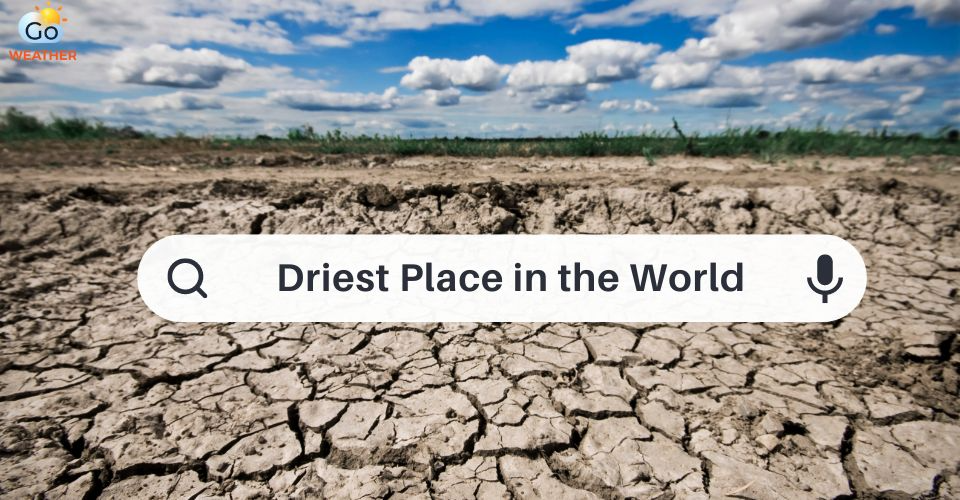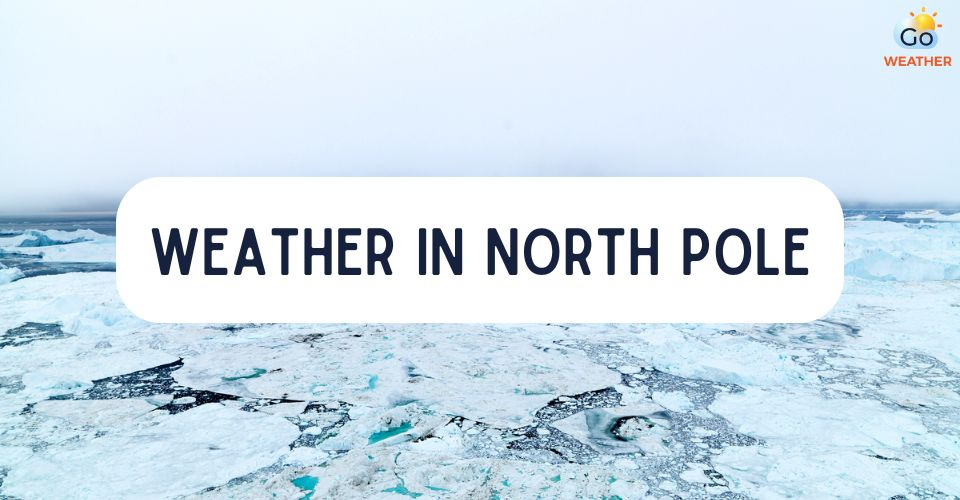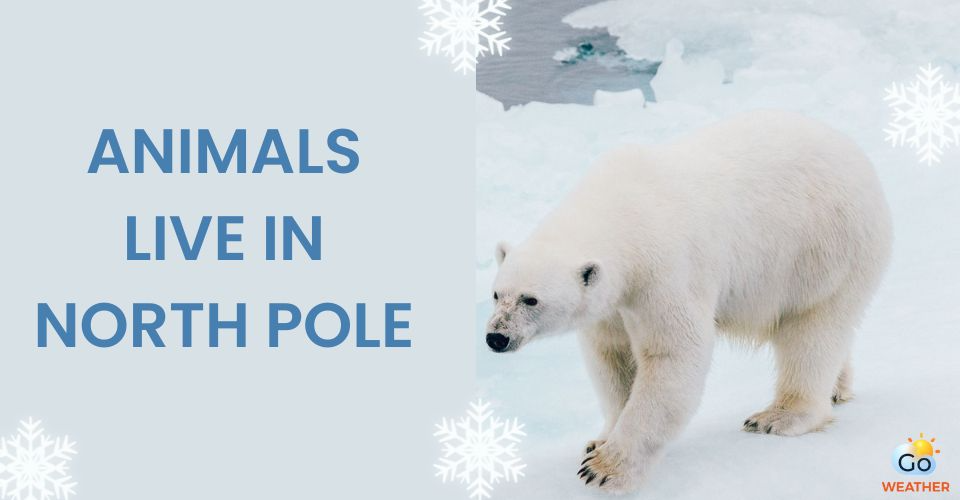What is the Weather Like in the Desert? 4 Types You Should Know
Thinking about the desert, the first thing that comes to our mind must be the scorching hot weather with endless sand dunes. But in fact, there are also a lot of other interesting facts related to desert weather that you might not know. What is the weather like in the desert? Keep reading on to get the answer!
.jpg)
What is the weather like in a desert?
According to sciening.com, there are four fundamental types of deserts in the world: hot-and-dry desert (also known as subtropical desert), semiarid desert (also known as cold-winter desert), coastal desert, and cold desert (also known as polar desert).
Of course, each desert has different weather patterns featuring characteristics related to temperature, seasons, precipitation, and more. Here are the details about the weather in different types of deserts!
Hot-and-dry Deserts
The hot-and-dry desert is hotter and drier than other types of desert. It generally has hot temperatures during the day and very cold temperatures during the night. In addition, there is very little rainfall throughout the year.
During the day, some hot-and-dry deserts can reach up to 49°C (equal to 120°F). But surprisingly, the temperatures in this type of desert might fall to as low as -18°C(or 0°F) in the middle of the night. What harsh weather conditions!
Regarding precipitation, as you can imagine, rainfall in hot-and-dry deserts is very, very low while the evaporation rate is much higher, making this area always so dry.
Though rainfall in hot and dry deserts is generally low, it varies among different areas.
.jpg)
What is the weather like in the Sahara desert?
For example, while the Sahara Desert receives as little as 1.5 cm (or 0.6 inches) of rainfall per year, the American deserts receive as much as 28 cm (or 11 inches) yearly.
But the Sahara Desert is not the driest in the world. The Atacama Desert in Chile is the driest desert, with less than 0.5 inches of annual rainfall. (Suggest: Driest place in the world)
In addition to the Sahara and Atacama Deserts, the Mojave and Australian Deserts are other examples of hot-and-dry deserts.
Semiarid Deserts
The second type of desert is the semiarid desert. Like the hot-and-dry desert, it has long, dry summers, little rainfall, and extreme temperatures that swing between day and night. Yet, it is less extreme than the hot-and-dry type of desert.
Summers in semiarid deserts have temperatures between 21°C and 27°C (equal to 69 and 80°F). In some areas, daytime temperatures can also be as high as 38°C (or about 100°F).
.jpg)
Semiarid deserts
At night, the temperatures in semiarid deserts can drop to about 10°C (or 50°F). Typically, the day-to-night temperature fluctuations in this weather desert are not as wide as in the hot-and-dry desert.
Regarding precipitation, semiarid deserts receive an average of between 2cm and 4cm (or 0.8 inches and 1.6 inches) of rainfall per year. Also, some deserts might receive more annual water from the condensation of dew created during the evening than from rainfall.
Due to the less harsh weather conditions, semiarid deserts have more biodiversity than hot-and-dry deserts. The composition of the soil there is more varied, including fine-textured sand, gravel, loose rock fragments, and more.
The presence of plants in this type of desert also varies, with cactus, bur sage, catclaw, jujube, creosote bush, etc.
Semiarid deserts can be found in Russia, northern Asia, Montana, Newfoundland, and other areas.
.jpg)
How hot is the desert?
Coastal Deserts
Compared to the two types of desert mentioned above, the weather conditions in coastal deserts are much less harsh, with lower day temperatures and higher annual rainfall.
On average, summer temperatures in coastal deserts range from 13 to 24°C (or 55 to 57°F), while winter temperatures can drop to less than 5°C (or 41°F).
The maximum temperature in coastal deserts is around 35°C (95°F), and the minimum temperature is about -4°C (about 25°F).
.jpg)
Coastal Deserts
The average annual rainfall in coastal deserts ranges between 8 cm and 13 cm (3 inches and 5 inches). Some have recorded as much rainfall as 37cm (14.5 inches).
Thanks to better weather conditions, coastal deserts have a high biodiversity of both plants and animals.
Coastal deserts are usually found in generally cool to moderately warm regions. The Namib Desert in southern Africa is an example of a coastal desert.
Read next:
Cold Deserts
Cold deserts are also known as polar deserts. Unlike the other types of desert mentioned above, the polar desert is much more humid, especially in the winter.
Winter in cold deserts comes in mid-December in the north polar areas and mid-June in the south polar regions and lasts 3 months. There will be snow in polar deserts during the cold winter months.
On average, annual precipitation in this type of desert is between 15 cm and 26 cm (6 inches and 10 inches), much higher than the 3 other types of desert listed previously. Interestingly, the highest annual precipitation recorded in a polar desert was as high as 46 cm (18 inches).
.jpg)
Cold desert
During the summer, temperatures in cold deserts range between 21 and 26°C (or 69 and 78°F). But in winter, they drop to around -2 to 4°C (or 28 to 39°F).
In spite of higher precipitation, cold desert areas aren't greener than other deserts. In contrast, plants are rare in this desert type, with just a few species, such as spiny deciduous plants, some mosses, and fungi.
As their name suggests, polar or cold deserts are located at the two poles of the Earth.
While the Antarctic polar desert is the world’s largest desert, with a total area of about 5.5 million square miles, the Arctic polar desert, with 5.4 million square miles, is also the second-largest one.
Conclusion
Now, you have the answer to the question, “What is the weather like in the desert?” Deserts are not just about scorching temperatures and endless sand dunes. As you can see, there are many interesting things and diversified features regarding desert weather. In the end, we hope all the information introduced in this article is helpful to you.











7 Comments
Sadea
I love it all so much
Cookie
*moans*
Owlet
cool
delbar
hey guys its me delbar_546, and toay wde playinf goweatherforcast!!!!!!! i post my number696969696969942-420 so call me back!!!!!
louisgamingcool
deez nuts
Mom
go do the dishes - your mom
dik
this sucks
Leave a Comment
Your email address will not be published. Required fields are marked *